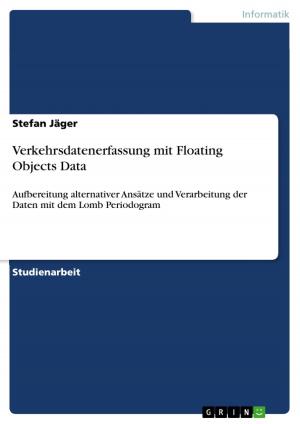The role of sports in jewish-american society
An analysis of certain aspects of jewish-american participation in sports
Nonfiction, Entertainment, Drama, Anthologies| Author: | Anja Dinter | ISBN: | 9783638796262 |
| Publisher: | GRIN Publishing | Publication: | June 8, 2007 |
| Imprint: | GRIN Publishing | Language: | English |
| Author: | Anja Dinter |
| ISBN: | 9783638796262 |
| Publisher: | GRIN Publishing |
| Publication: | June 8, 2007 |
| Imprint: | GRIN Publishing |
| Language: | English |
Seminar paper from the year 2003 in the subject American Studies - Culture and Applied Geography, grade: 1,3, University of Potsdam (Institut für Anglistik und Amerikanistik), course: Jewish-American History and Life , 10 entries in the bibliography, language: English, abstract: It is the aim of the following work to analyze the role of sports in Jewish-American life, mainly concentrating on the time until the end of the World War II. Up to the present day the notion of Jewish culture and tradition emphasizing intellectual accomplishments and the life of the mind and not having place for sport and the physical has been prevalent. Due to the traditional emphasis of learning and an appreciation for sophistication during all of Jewish history, the stereotype view of a general rejection of sports by Jews and the image of Jewish physical weakness seems to have evolved as a consequence. This image has even been misrepresented by anti-Semites, as Henry Ford, to show that Jewish-Americans are 'ill-fit to be true Americans'. Previously read books dealing with Jewish sports in Germany and an article on the importance of sports within Jewish religion that contradicted the image mentioned above, let an increased interest in the specific mind-set of Jewish-Americans towards physical activities develop. Due to the complexity of the topic and the extent of this paper only certain aspects can be presented in the discourse, unfortunately excluding other interesting ones. The focus will be on the actual participation and achievements as well as attitudes of Jews towards sports and the effects of this field on the integration of Jewish immigrants. The time frame has been limited to the period between the first large waves of immigration and the end of World War II because of the adjustment of Jewish sports to general developments thereafter. Nevertheless, some general tendencies of the post-World War II decades will be discussed. Background information on the general historical context and the evolution of American Sports will ensure a better and deeper understanding of the issues discussed.
Seminar paper from the year 2003 in the subject American Studies - Culture and Applied Geography, grade: 1,3, University of Potsdam (Institut für Anglistik und Amerikanistik), course: Jewish-American History and Life , 10 entries in the bibliography, language: English, abstract: It is the aim of the following work to analyze the role of sports in Jewish-American life, mainly concentrating on the time until the end of the World War II. Up to the present day the notion of Jewish culture and tradition emphasizing intellectual accomplishments and the life of the mind and not having place for sport and the physical has been prevalent. Due to the traditional emphasis of learning and an appreciation for sophistication during all of Jewish history, the stereotype view of a general rejection of sports by Jews and the image of Jewish physical weakness seems to have evolved as a consequence. This image has even been misrepresented by anti-Semites, as Henry Ford, to show that Jewish-Americans are 'ill-fit to be true Americans'. Previously read books dealing with Jewish sports in Germany and an article on the importance of sports within Jewish religion that contradicted the image mentioned above, let an increased interest in the specific mind-set of Jewish-Americans towards physical activities develop. Due to the complexity of the topic and the extent of this paper only certain aspects can be presented in the discourse, unfortunately excluding other interesting ones. The focus will be on the actual participation and achievements as well as attitudes of Jews towards sports and the effects of this field on the integration of Jewish immigrants. The time frame has been limited to the period between the first large waves of immigration and the end of World War II because of the adjustment of Jewish sports to general developments thereafter. Nevertheless, some general tendencies of the post-World War II decades will be discussed. Background information on the general historical context and the evolution of American Sports will ensure a better and deeper understanding of the issues discussed.















